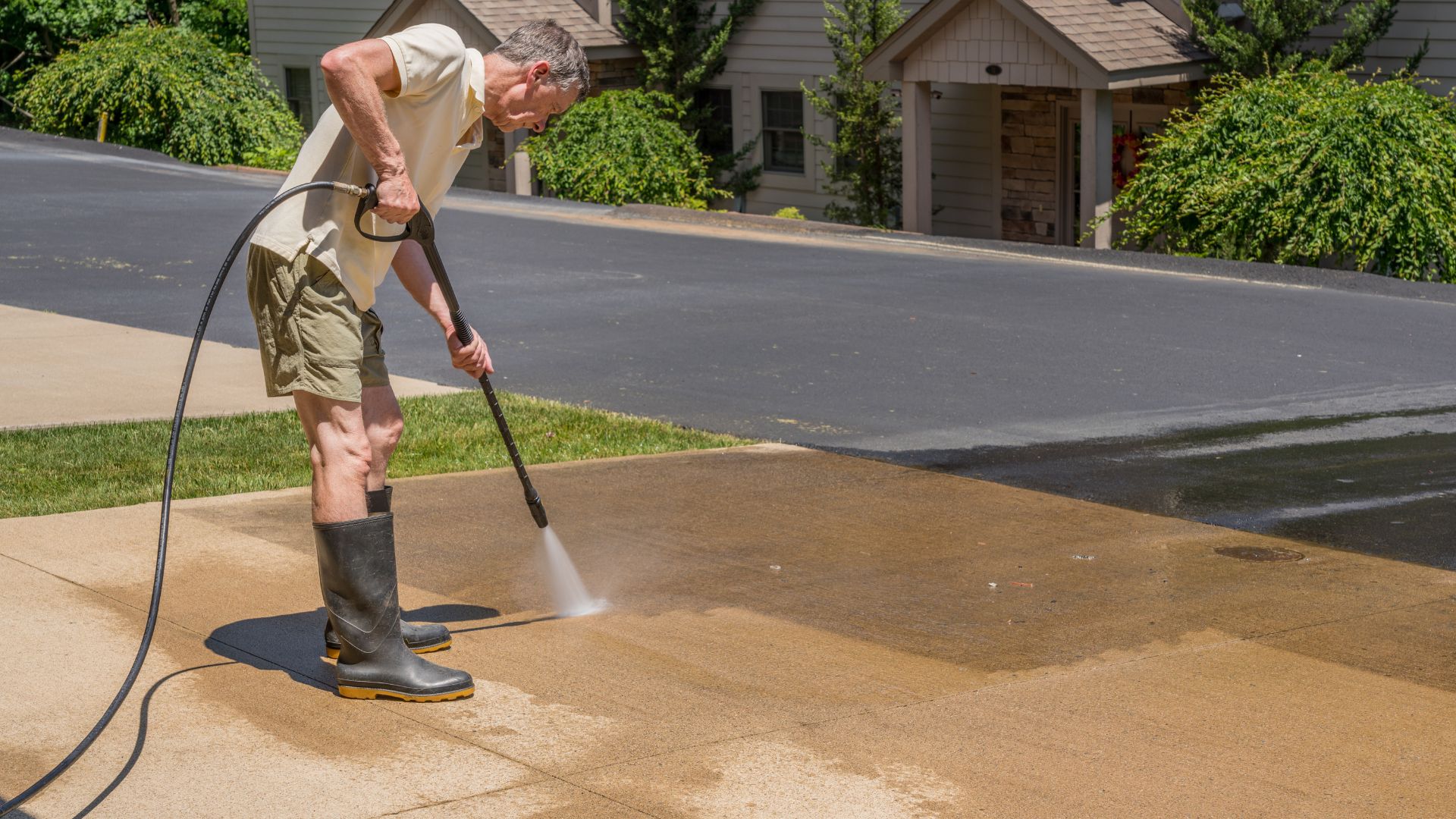Concrete is a durable and versatile material that is commonly used for a variety of surfaces, including driveways, patios, sidewalks, and even interior floors. However, like any other surface, it requires proper care and maintenance to keep it looking its best. In this blog post, we will discuss the best ways to care for your concrete surfaces and ensure they last for years to come.
Cleaning Concrete
One of the most important aspects of caring for your concrete surfaces is keeping them clean. Regular cleaning can help prevent the buildup of dirt, grime, and other debris that can cause discolouration and damage to the surface. Not only that, but it also helps to maintain the overall aesthetic of the surface and make it look more presentable.
Pressure Washing
Pressure washing is an effective method for cleaning concrete surfaces. It can remove dirt, grime, and other debris that can cause discolouration and damage to the surface. However, it’s important to use the correct nozzle and pressure setting to avoid damaging the surface. When pressure washing, it is important to start from the top and work your way down, as this will prevent dirty water from running back onto the surface you just cleaned. It is also important to note that pressure washing should only be done on surfaces that are in good condition, as it can potentially cause damage to surfaces that are already deteriorating.
Detergents
Detergents can also be used to clean concrete surfaces. They can be applied with a brush or a mop and then rinsed off with a hose or a pressure washer. It’s important to choose a detergent that is specifically designed for use on concrete and to follow the manufacturer’s instructions. When using detergents, it is important to use them sparingly, as too much detergent can leave a residue on the surface, which can be difficult to remove.
Stains
Stains can be a common problem on concrete surfaces. They can be caused by a variety of things, including oil, grease, and mould. To remove stains, use a degreaser or a solution of water and bleach. Be sure to rinse the surface thoroughly with water after cleaning. When dealing with stains, it is important to address them as soon as possible, as they can become more difficult to remove the longer they are left untreated.
Sealing Concrete
Sealing concrete can help protect it from the elements and prolong its lifespan. Sealers work by creating a barrier between the surface and the elements, which helps to prevent water, oil, and other substances from penetrating the surface.
Sealers
Sealers are a great way to protect concrete surfaces from damage. They can help prevent the penetration of water, oil, and other substances that can cause discoloration and damage to the surface. There are several types of sealers available, including acrylic, epoxy, and polyurethane. Acrylic sealers are the most common type of sealer used on concrete surfaces, as they provide a clear, protective barrier that is easy to apply. Epoxy sealers are also popular, as they provide a hard, durable surface that is resistant to scratches and stains. Polyurethane sealers are known for their excellent resistance to chemicals and UV rays, making them a great option for outdoor surfaces.
Application
When applying a sealer, it’s important to choose the right product for your specific needs and to follow the manufacturer’s instructions. Be sure to apply the sealer to a clean and dry surface, and avoid applying it in direct sunlight or when the temperature is toohot or too cold. It is also important to prepare the surface properly before applying the sealer. This includes cleaning the surface thoroughly and allowing it to dry completely before applying the sealer. It is also important to apply the sealer in thin, even coats, as this will ensure that the surface is properly protected.
Additionally, it is important to consider the frequency at which you should reapply the sealer. This will depend on the type of sealer you choose and the conditions to which the surface is exposed. In general, acrylic sealers should be reapplied every 2-3 years, while epoxy and polyurethane sealers can last up to 5 years. It is also important to note that if the surface is exposed to heavy traffic or harsh weather conditions, it may be necessary to reapply the sealer more frequently.
Maintenance
Proper maintenance is important to keep your concrete surfaces in good condition. This includes keeping the surfaces clean, free of debris, and free of any substances that can cause damage. Additionally, it is important to monitor the condition of the surface and address any issues that arise, such as cracks or chips, as soon as they are noticed.
Additionally, it is important to ensure that the surface is not being exposed to any harsh chemicals or materials that can cause damage. This includes things like salt, which can be used to melt ice on driveways and sidewalks in the winter. Salt can cause damage to concrete surfaces over time, so it is important to use it sparingly and to rinse the surface thoroughly with water after it has been used.
Proper care and maintenance of your concrete surfaces is important to ensure they last for years to come. From regular cleaning to sealing, taking the time to care for your concrete surfaces can help protect them from damage and prolong their lifespan. Hervey Bay Concreting Solutions is a leading concreting company in the Hervey Bay area, providing a wide range of concreting solutions to residential and commercial customers. We have a team of experienced professionals who are dedicated to providing our customers with the highest quality service. Contact us today for a free estimate and let us help you find the perfect solution for your concrete surfaces.


